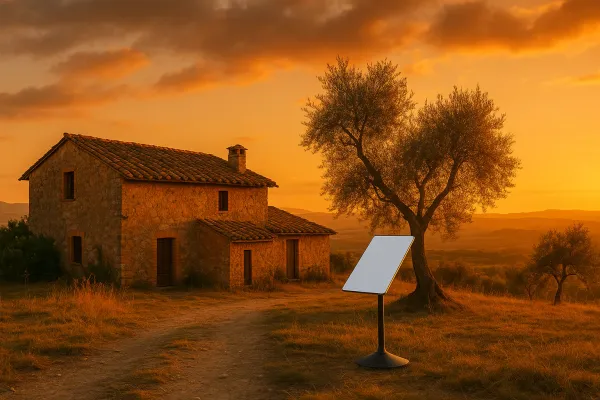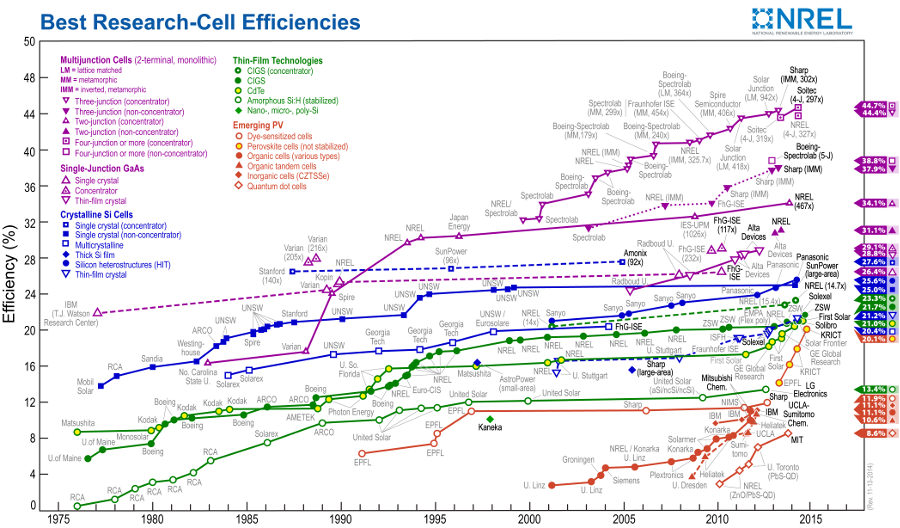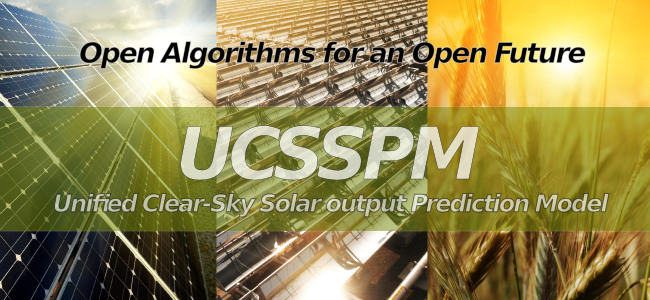Rustic Retreat
Hot Projects
Live broadcasts and documentation from a remote tech outpost in rustic Portugal. Sharing off-grid life, the necessary research & development and the pursuit of life, without centralized infrastructure.
 Subscribe to our new main project Rustic Retreat on the projects own website.
Subscribe to our new main project Rustic Retreat on the projects own website.

Apollo-NG is a mobile, self-sustainable, independent and highly-experimental Hackbase, focused on research, development and usage of next-generation open technology while visiting places without a resident, local Hackerspace and offering other Hackers the opportunity to work together on exciting projects and to share fun, food, tools & resources, knowledge, experience and inspiration.
There are often reports about breakthroughs in alternative technologies and when I look, I can find charts claiming that in 2014/2015 top solar conversion efficiency is reported to be at about 45%. However, when I look harder I don't seem to find obtainable Panels above 21%. The highest grade I could get were the Mobile Technology MT-ST110 panels on the odyssey. I can't help but to ask myself:

Now, a couple of researchers with interdisciplinary and seemingly non-related backgrounds published the concept to apply a quasi-random nano-structure to a solar (PV) cell in order to increase the absorption of photons (decrease reflection) and reported an overall broadband absorption enhancement of that solar cell to be 21.8%, when a Blu-Ray land/pit pattern is applied.
From the little info publicly available, it seems they've just tried different materials for this approach and discovered that Blu-Ray's compression algorithm (tested with Jackie Chan - Police Story 3: Supercop) creates a favorable quasi-random array of lands and pits (0s and 1s) with feature sizes between 150 and 525 nm, which seems to work quite well for light-trapping (photon management) applications over the entire solar spectrum.
http://www.mccormick.northwestern.edu/news/articles/2014/11/ http://www.extremetech.com/extreme/194938
IMHO, it should be easy to use a real random number generator as a source, create some land/pit patterns following Blu-Ray specs (physical), run some tests and apply that to the production process. If it works, the sudden increase of convertible sustainable energy would be more than just considerable.
Let's come back here in the future and measure how long it took to get into a real product. Especially in constrained off-grid systems like Apollo-NG, with such little usable surface area, every 1% of efficiency counts for a lot.
I know that we usually fly over webpages just scanning text for keywords and structural bits and pieces of information, with the least amount of attention we can spare. We often don't really read anymore. But today I would like you to slow down, take a moment, get your favorite beverage and sit down to actually read this, because a part of my current work presented a perfect opportunity to go into learning, knowledge transfer, inspiration and of course the misconception of originality as well.
When I was a small boy, I was often asked by grown-up's what I wanted to be when I grew up. I always answered: I will study cybernetics. The kicker is, I just said that because I knew it would please my mother, so she could enjoy showing off, what a smart and ambitious son she had. But as it turned out, I obviously wasn't smart enough for that :)
For the past couple of weeks I've been scrambling like hell and to get some of the work done I had to create an army of slaves to do it first. So I've been busy building robots of all different kinds. Some of them are made of real hardware. Others exist in software only and one of those creations shall be used as an example, to reflect the learning process involved.
When I look at today's ways of “learning” in school and universities I am not surprised that we are breeding generations of mindfucked zombies, endlessly repeating the same mistakes, trying to use the one tool they've learned for everything (even if completely incompatible). Pointless discussions about originality, plagiarism and unique revolutionary ideas. Patents. Intellectual-Property. Bullshit. Many people with that kind of background I meet cannot even say “I don't know”. They will scramble and come up with a bullshit answer for everything, only to appear knowing. Why? Because they have been taught that not knowing something is equal to failure. And failure will lead to become an unsuccessful looser, who will not get laid, right?
But how should anyone's brain be able to really learn something when it believes (even when just pretending) that it already knows it? You cannot fill a cup that already believes itself to be full. When you pretend to be an expert, you obviously cannot even ask questions that would help you to really understand something, because then your “expert status” would fade away. So better make your heads empty, because the more you learn, the more you realize, that you don't know shit.
Which turns our focus to failure. From all I could learn about efficient learning, failure was always the biggest accelerator for learning. If everything went smoothly and I didn't have to do much to learn/realize how or why something worked I didn't learn anything about it, because I simply didn't have to. Only failure and deep engagement with whatever I tackled really let my brain comprehend things to a level where I can say I've learned more about it.
This is a little drawing I made modeling how my personal learning process works and after looking at a lot of history, it seems to me that we can apply it over all ages and societies as well. Only that we've managed to carry cultural ballast with us, which tries to pretend that the right half of the circle doesn't exist or when not denied is always associated with negative educational/social metrics/values (grades/recognition).
Before we had Internet, it was easy to travel somewhere, copy what other people did, come back and pretend it's one's own “original” work (simply lie about it). No one could really check it. Especially not on individual mass scale. It was easy to sell the illusion of revolutionary and “original” work. But then, why are so many “original” pop-songs (not the countless covers of these songs anyways) basically based on the melodies of countless local folk songs from all ages from all over the world? Or why were the Americans so eager to pull off Operation Paperclip after WW2? Why has there been and is so much industrial/military espionage to get the secret plans of “the other guys” if they were all so original? Well they weren't, because…
The ucsspm is an open-source clear-sky prediction model, incorporating math algorithms based on latest research by the Environmental and Water Resources Institute of the American Society of Civil Engineers and a few veteran but still valid and publicly available NOAA/NASA computations. It has been around for a while but received a major revision, code refactoring and got bumped to primary project status, since it's becoming an essential tool in predicting Apollo-NG deployment location feasibility.

A long-term test setup collecting simulation and reference measurement data for the odyssey and aquarius has been set up and will be published soon as well. The first results look quite promising - it's definitely on the right track to become a unified, reliable and open clear-sky global solar radiation prediction model. We are looking forward for you, to use, review, verify and enhance it as well.